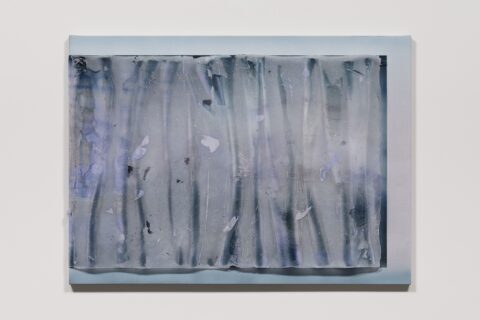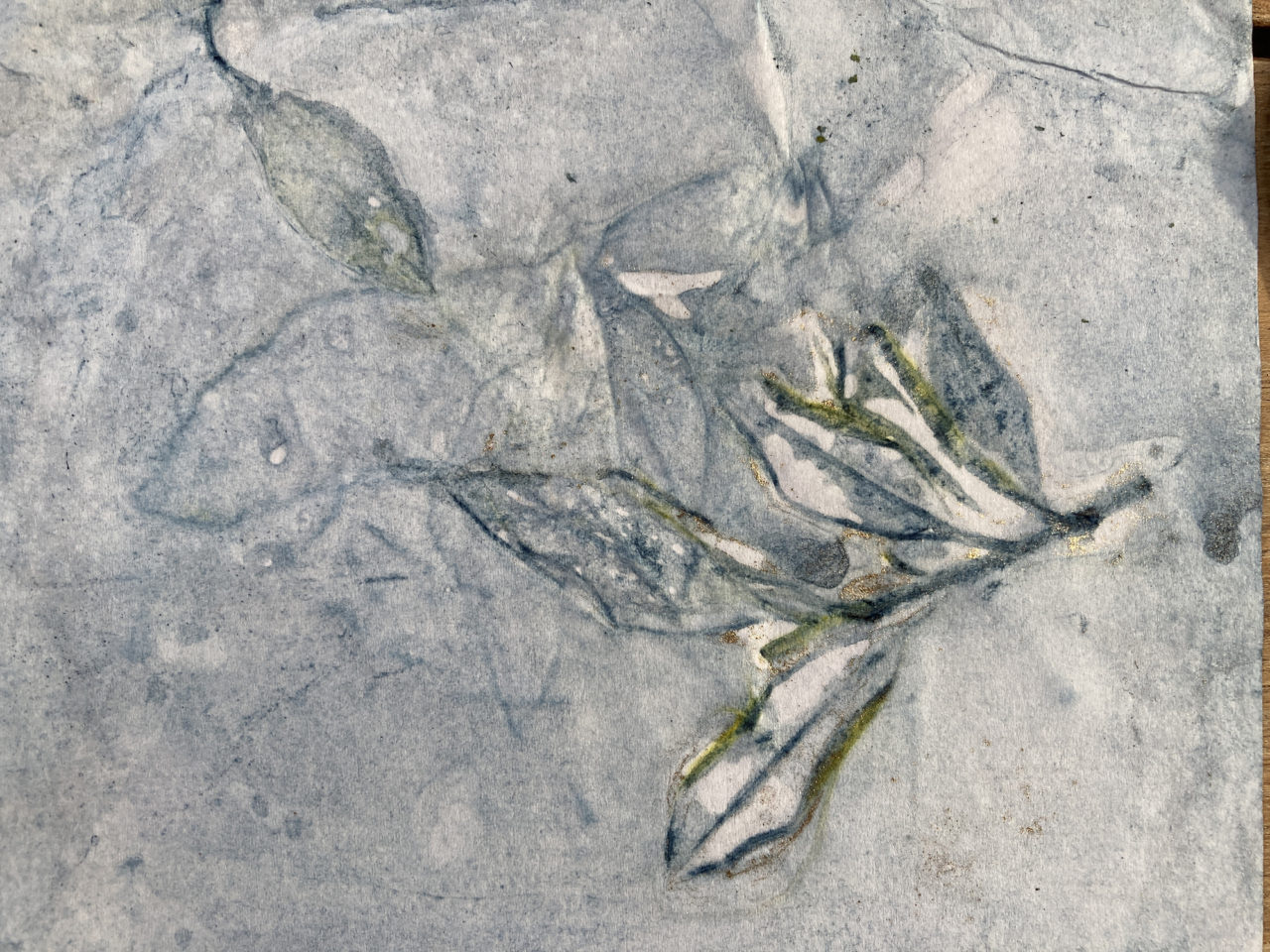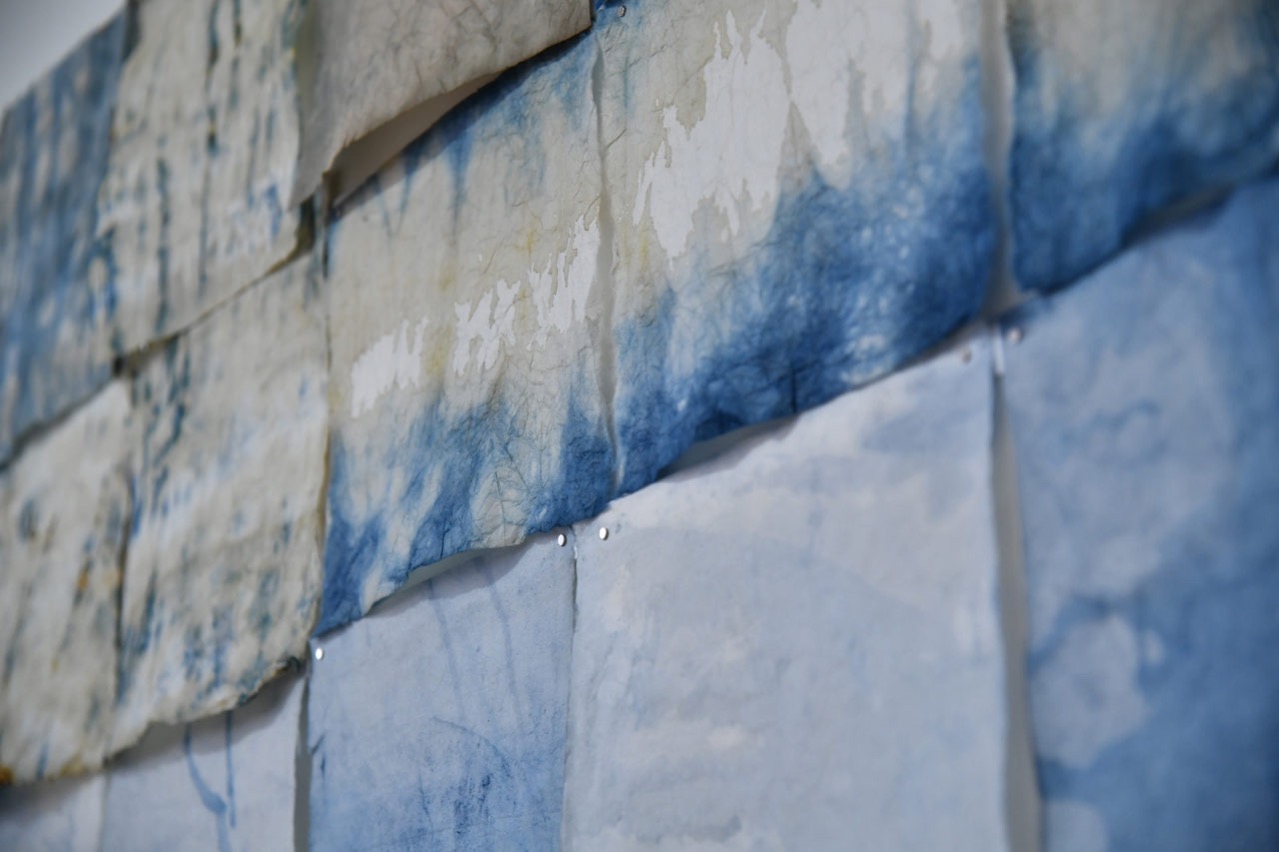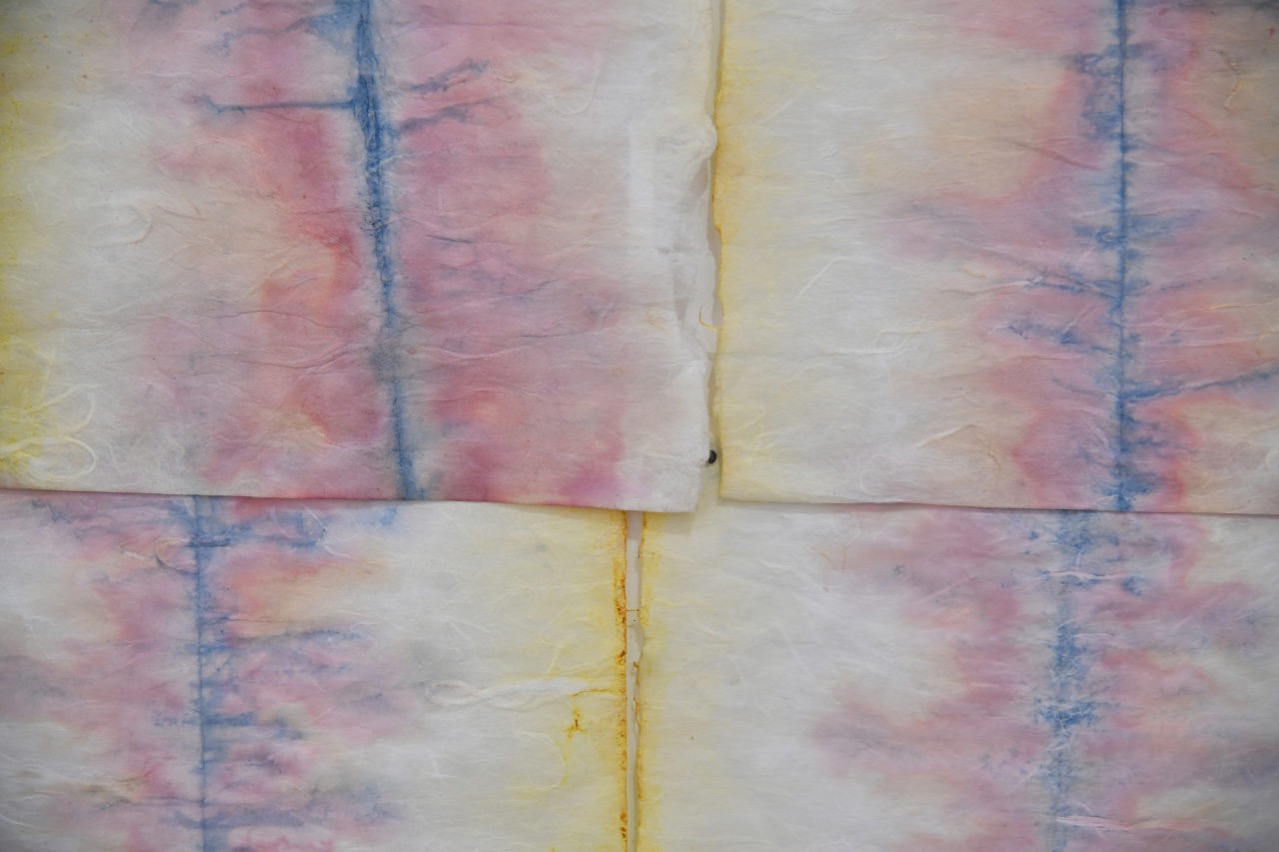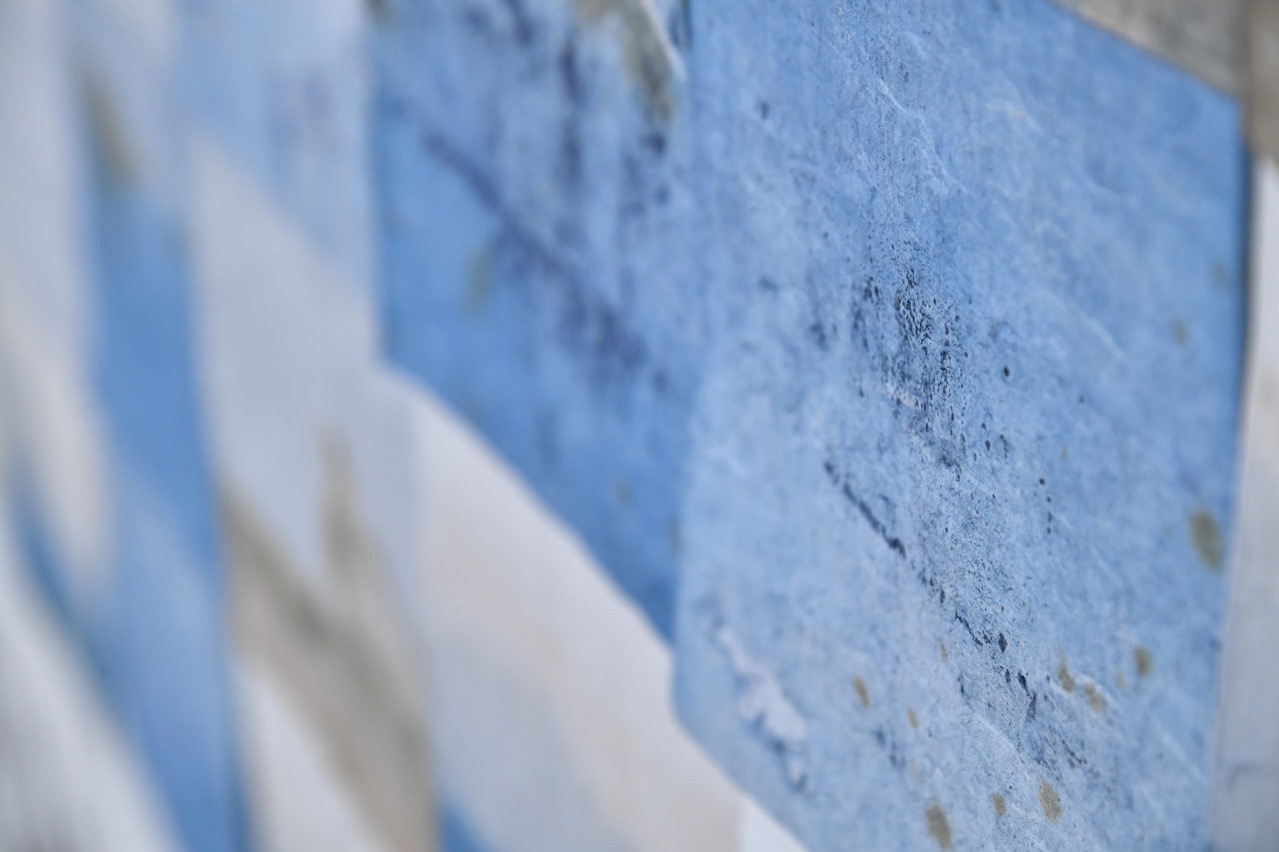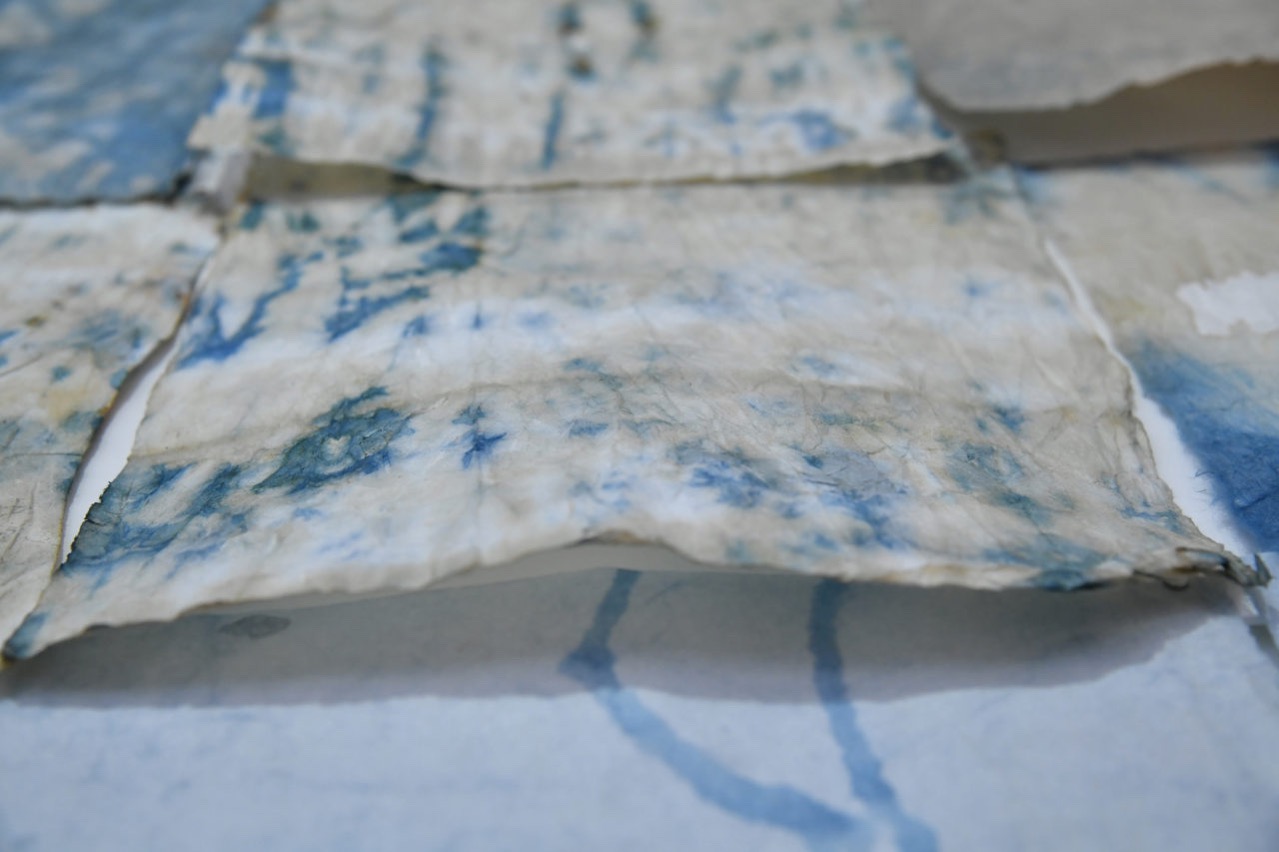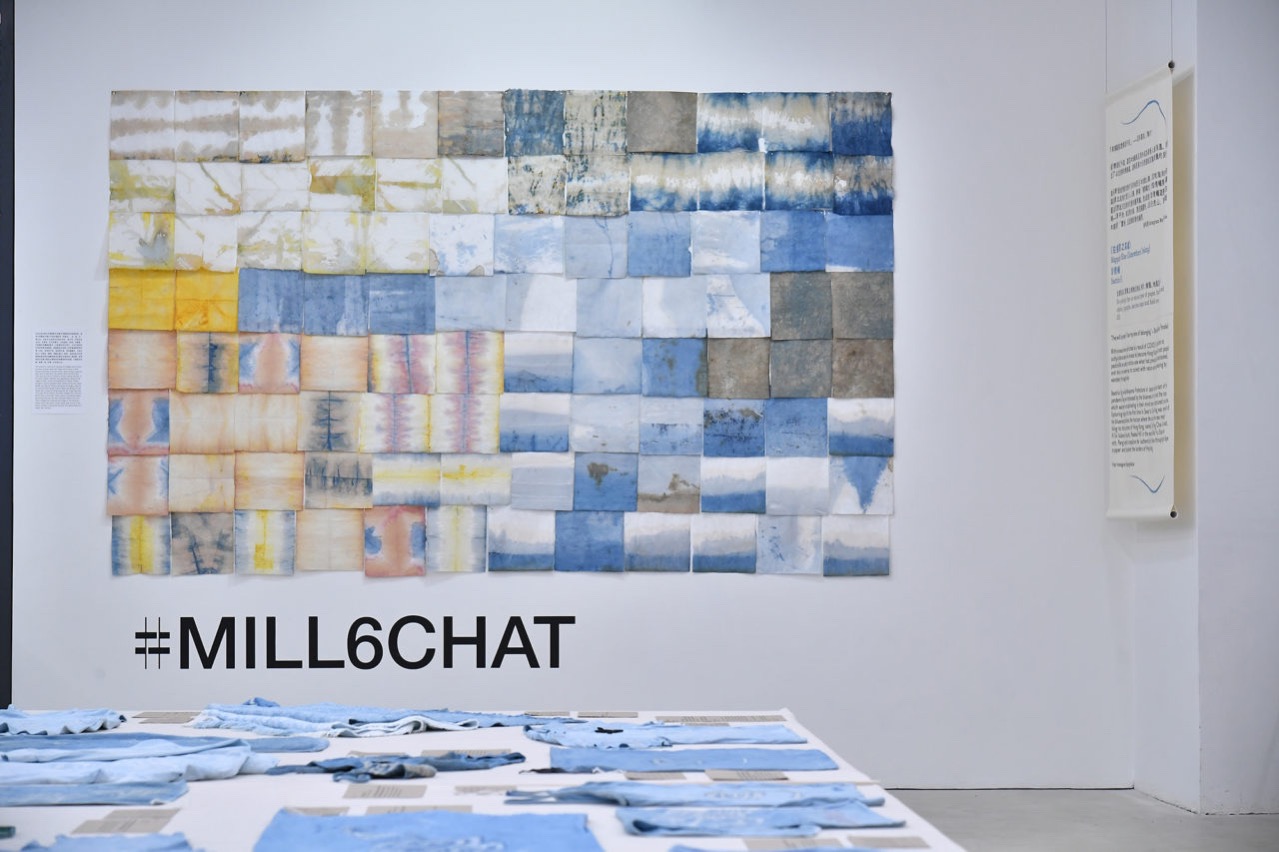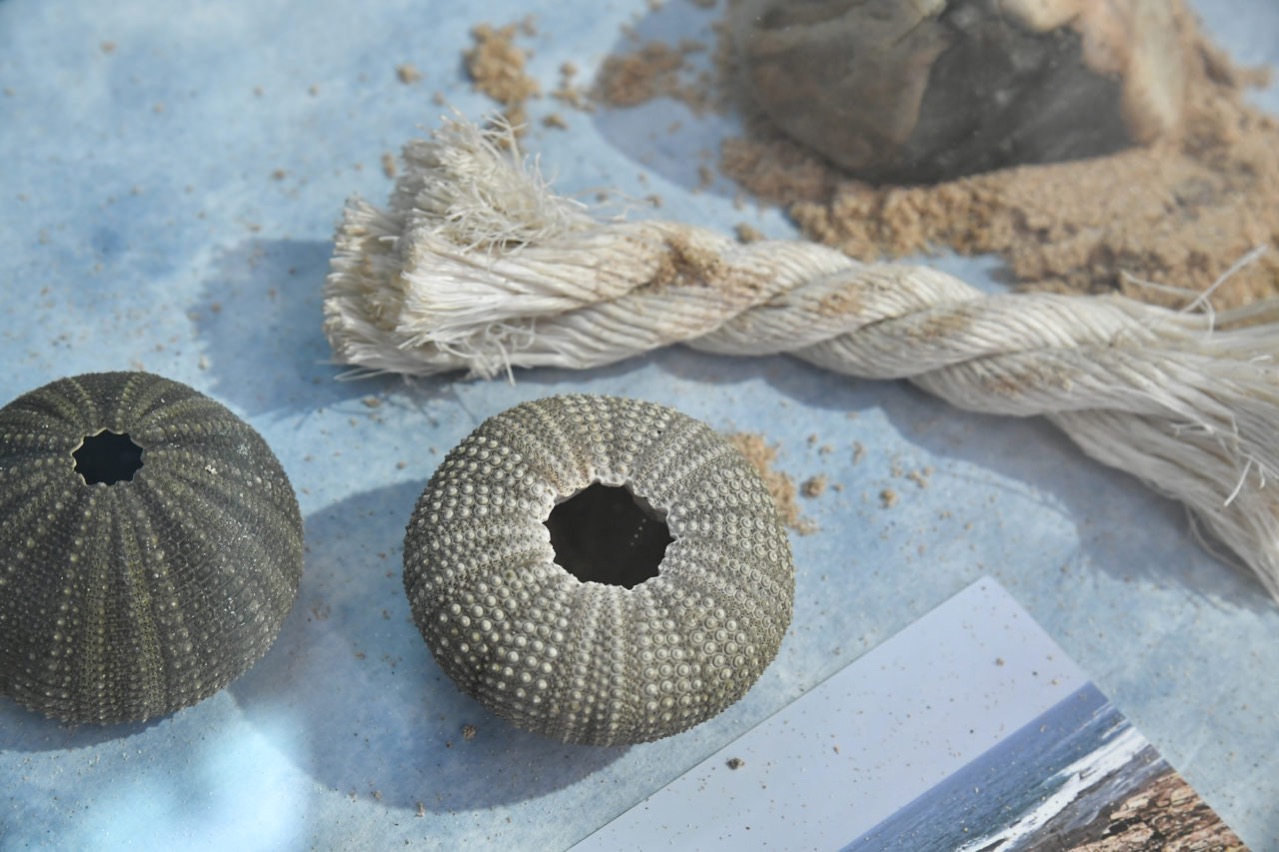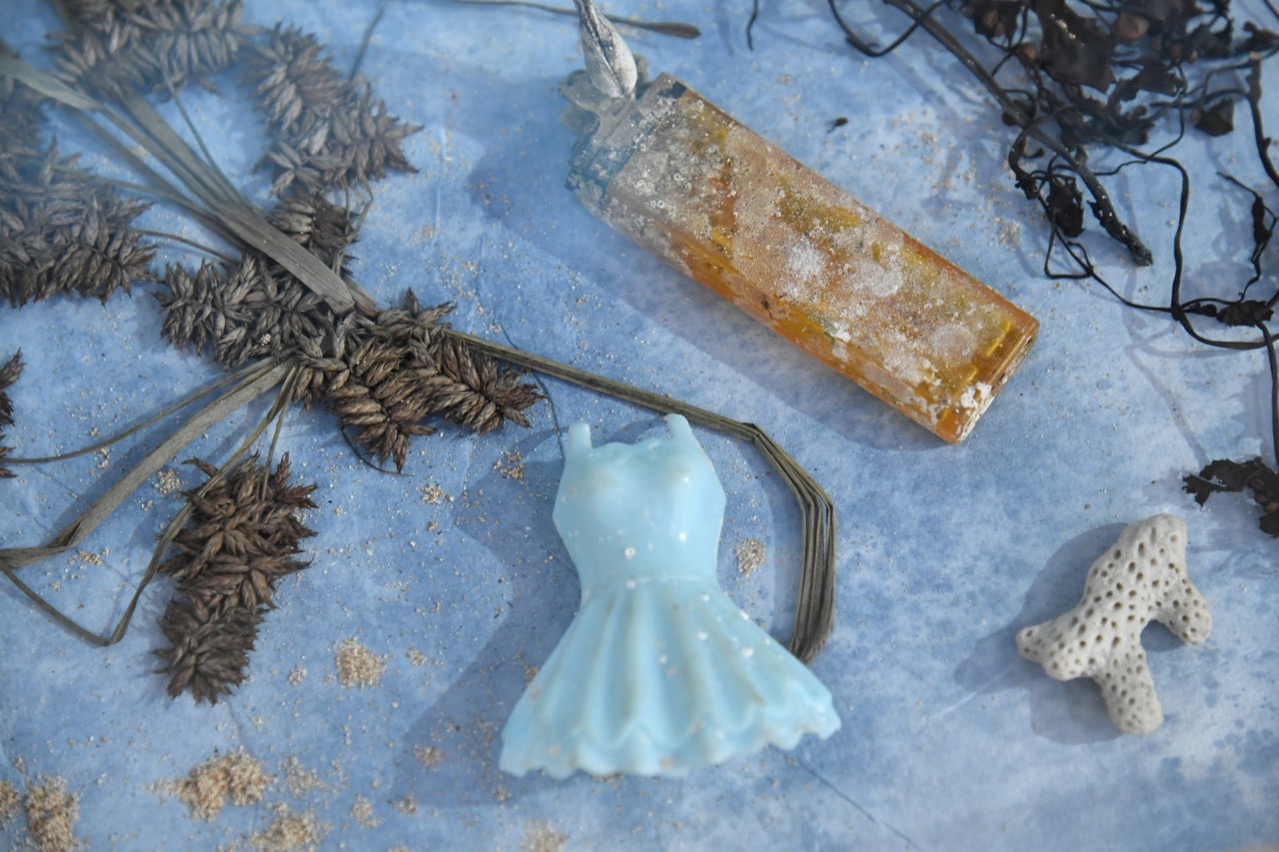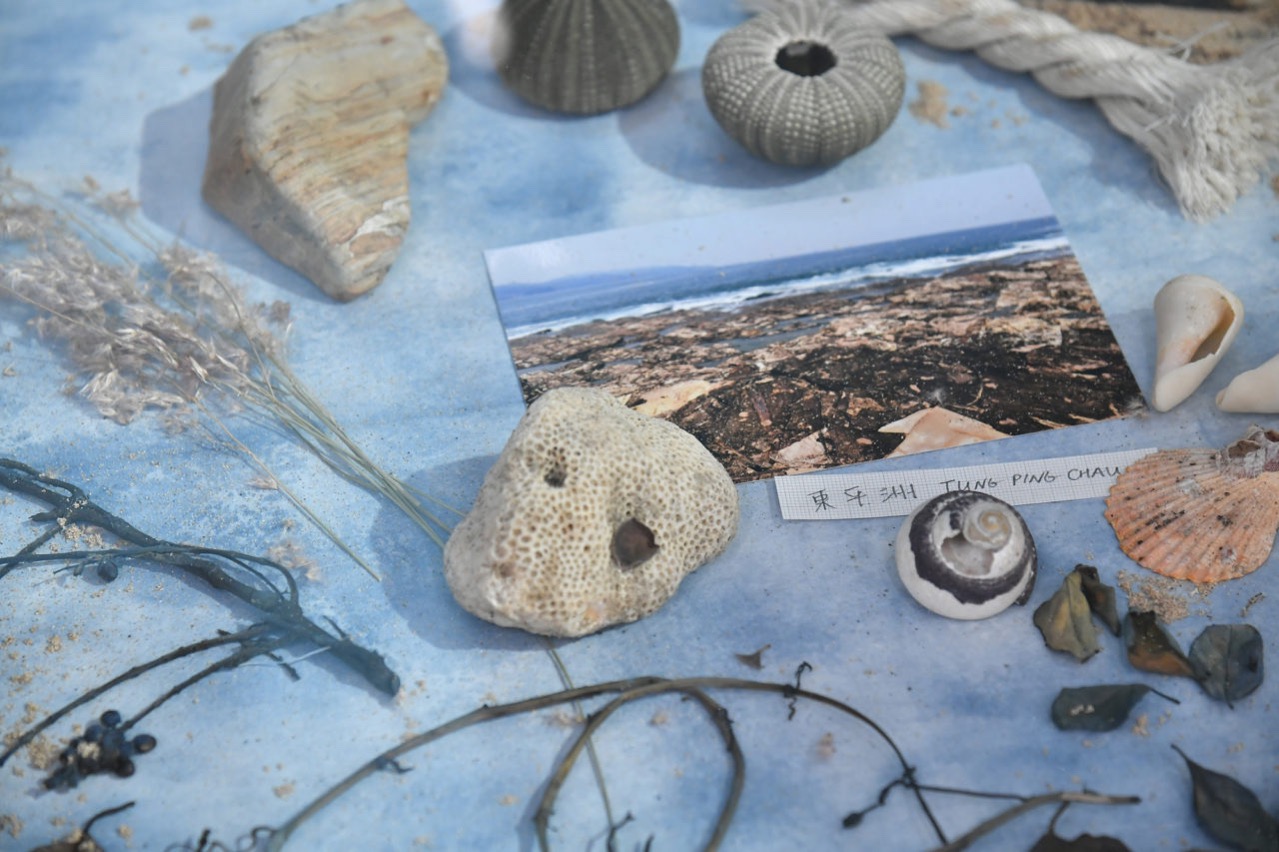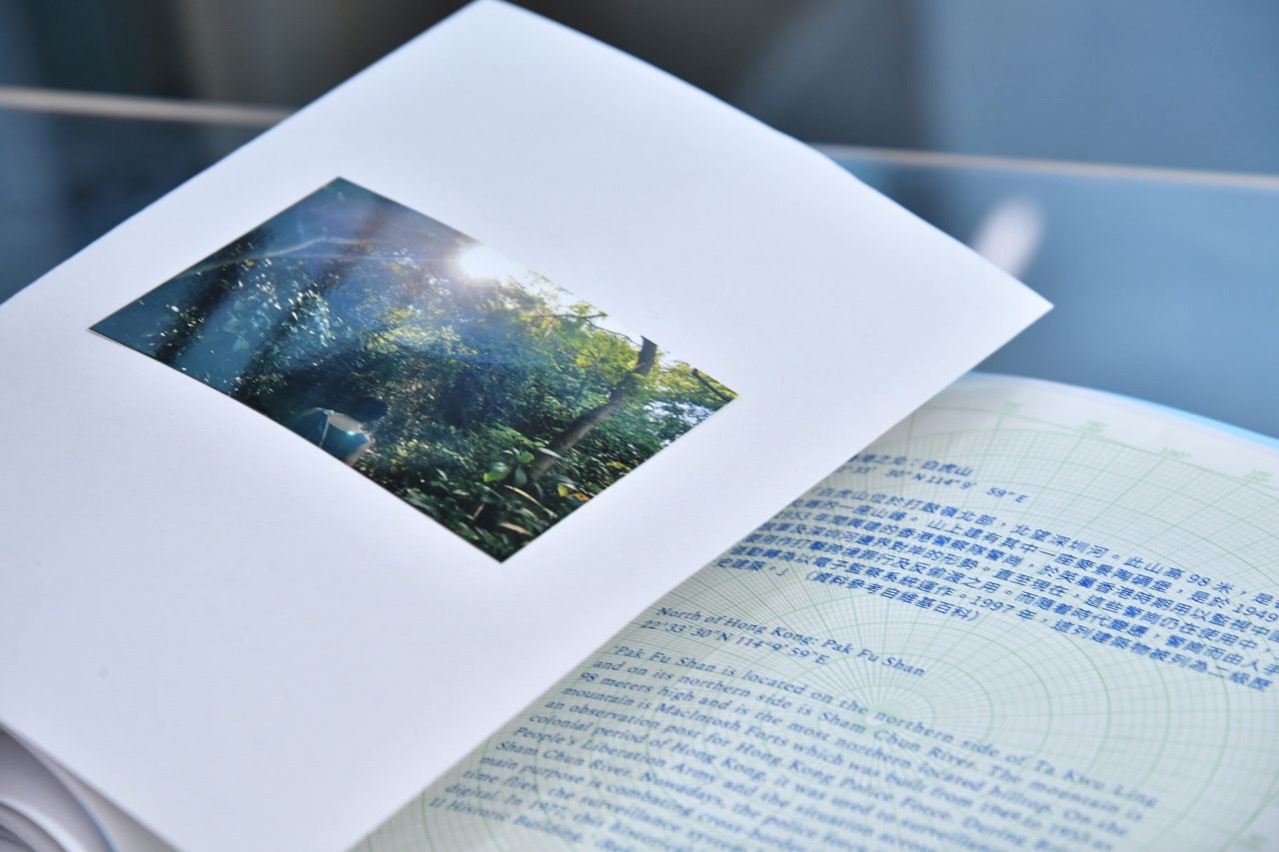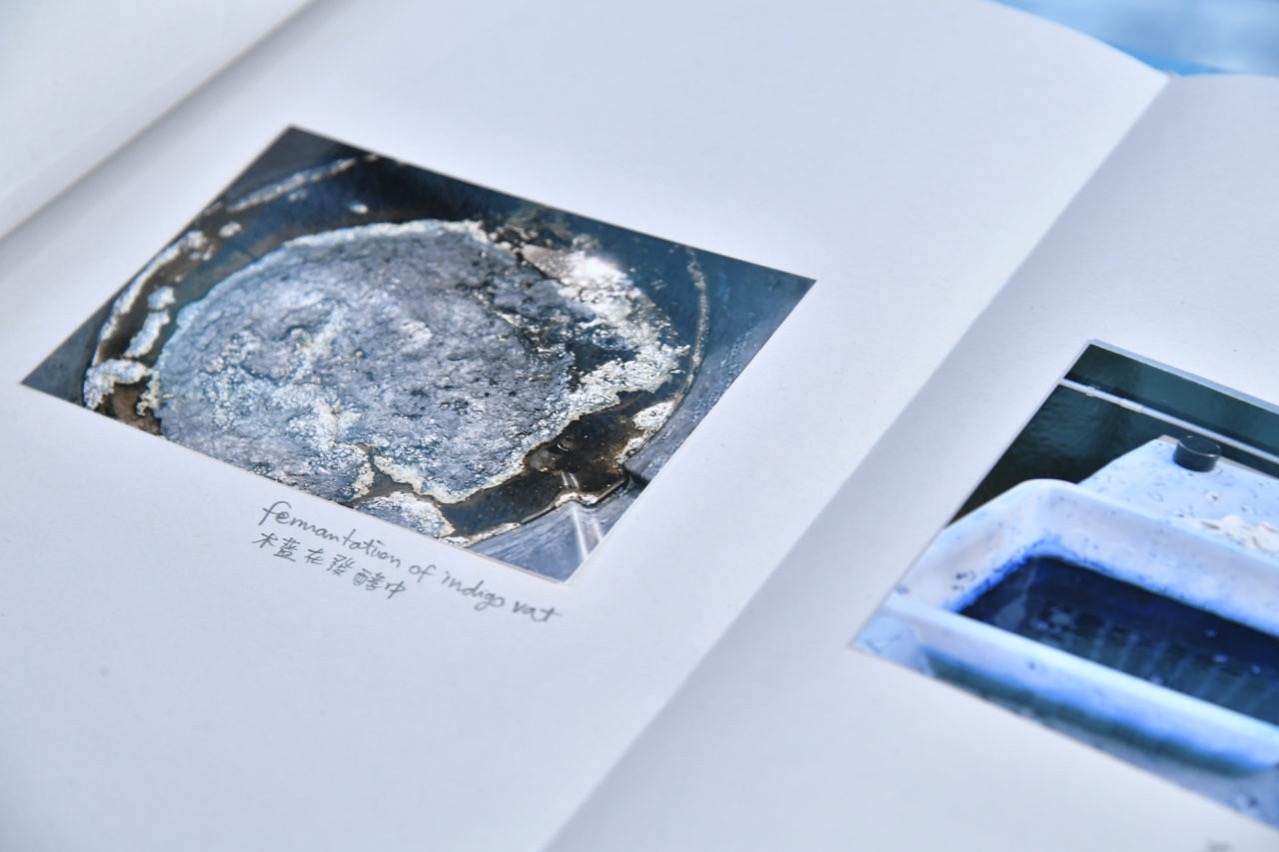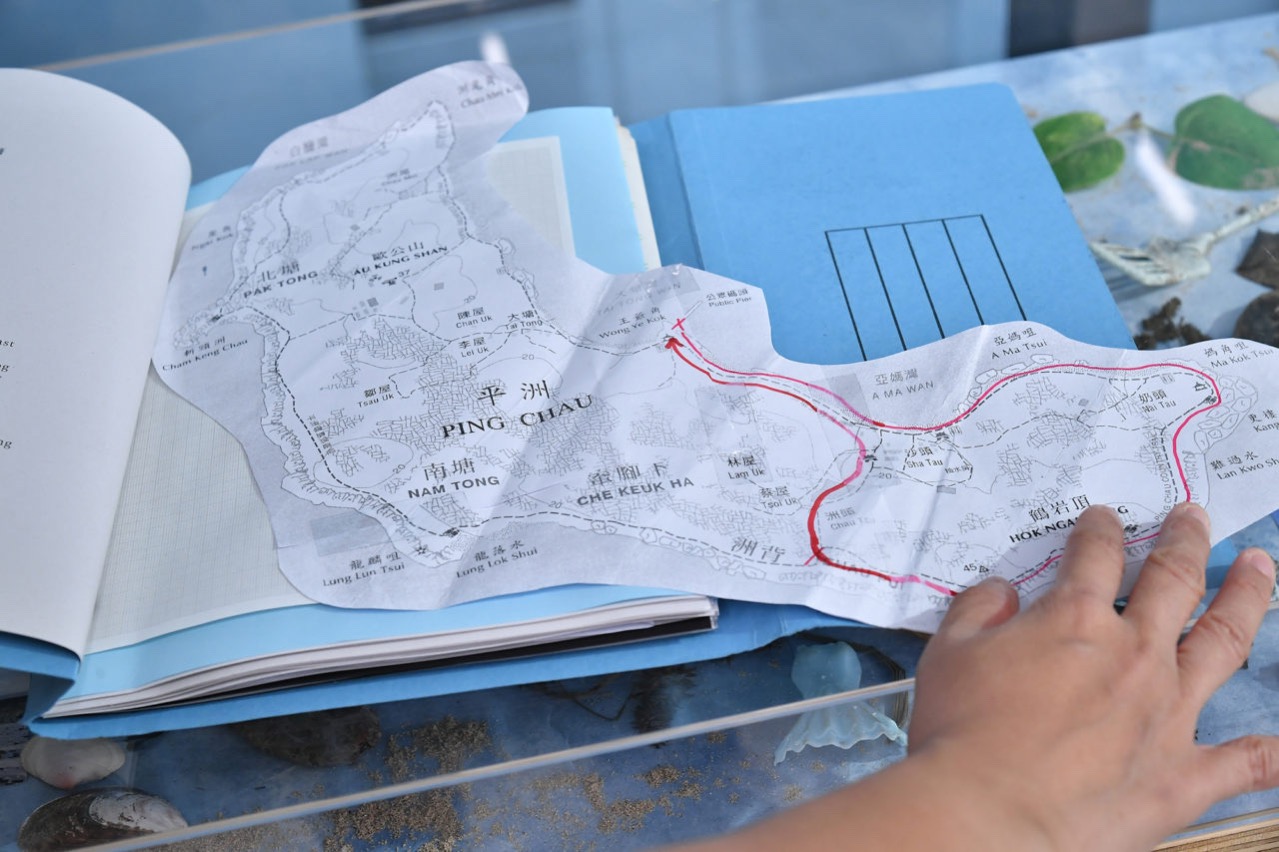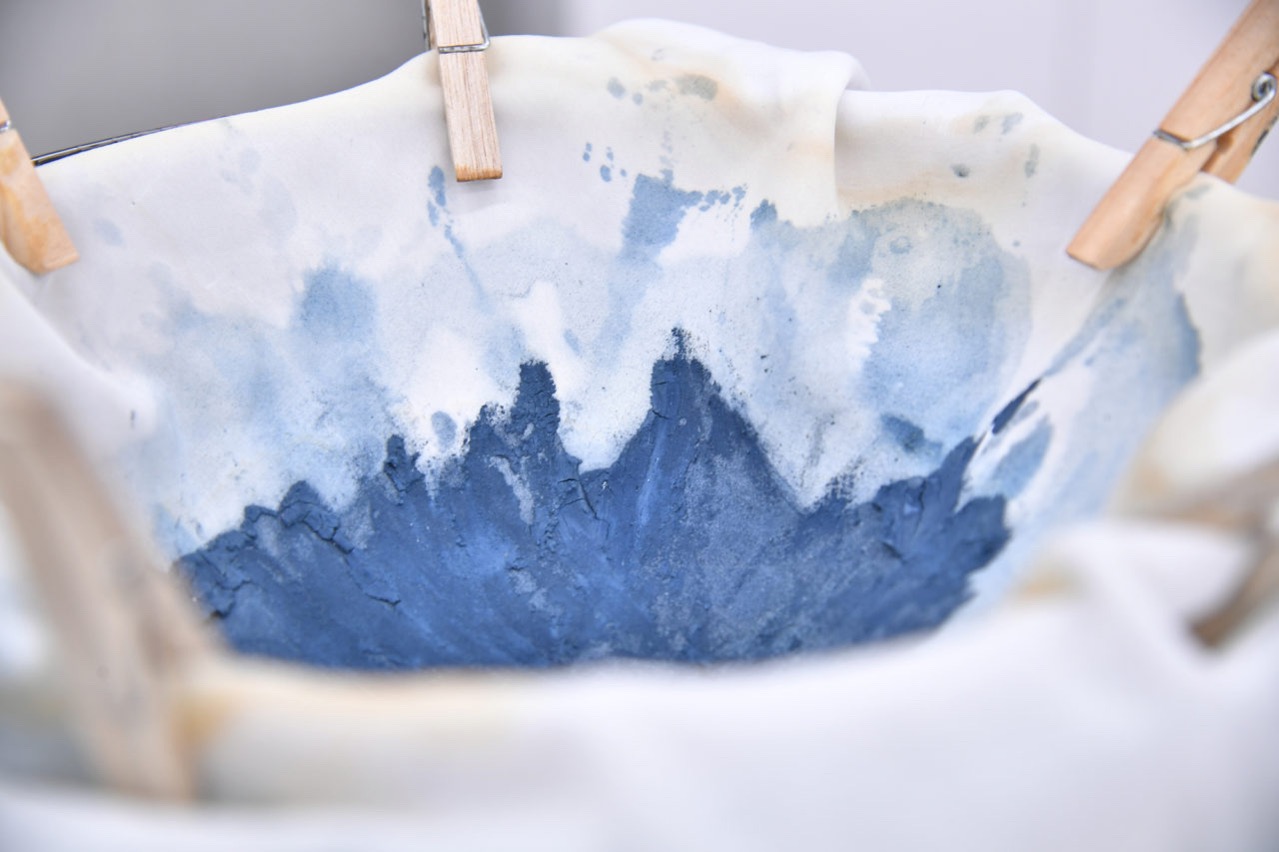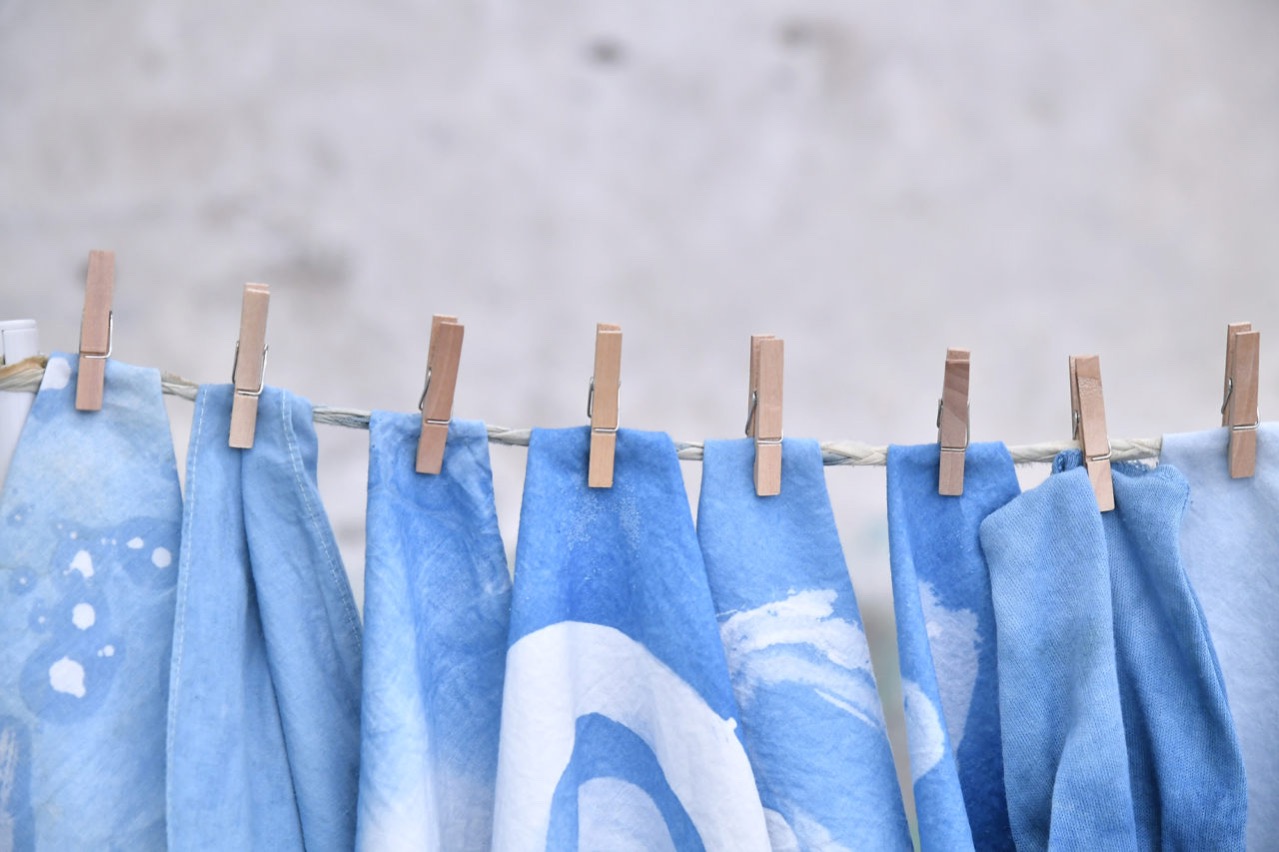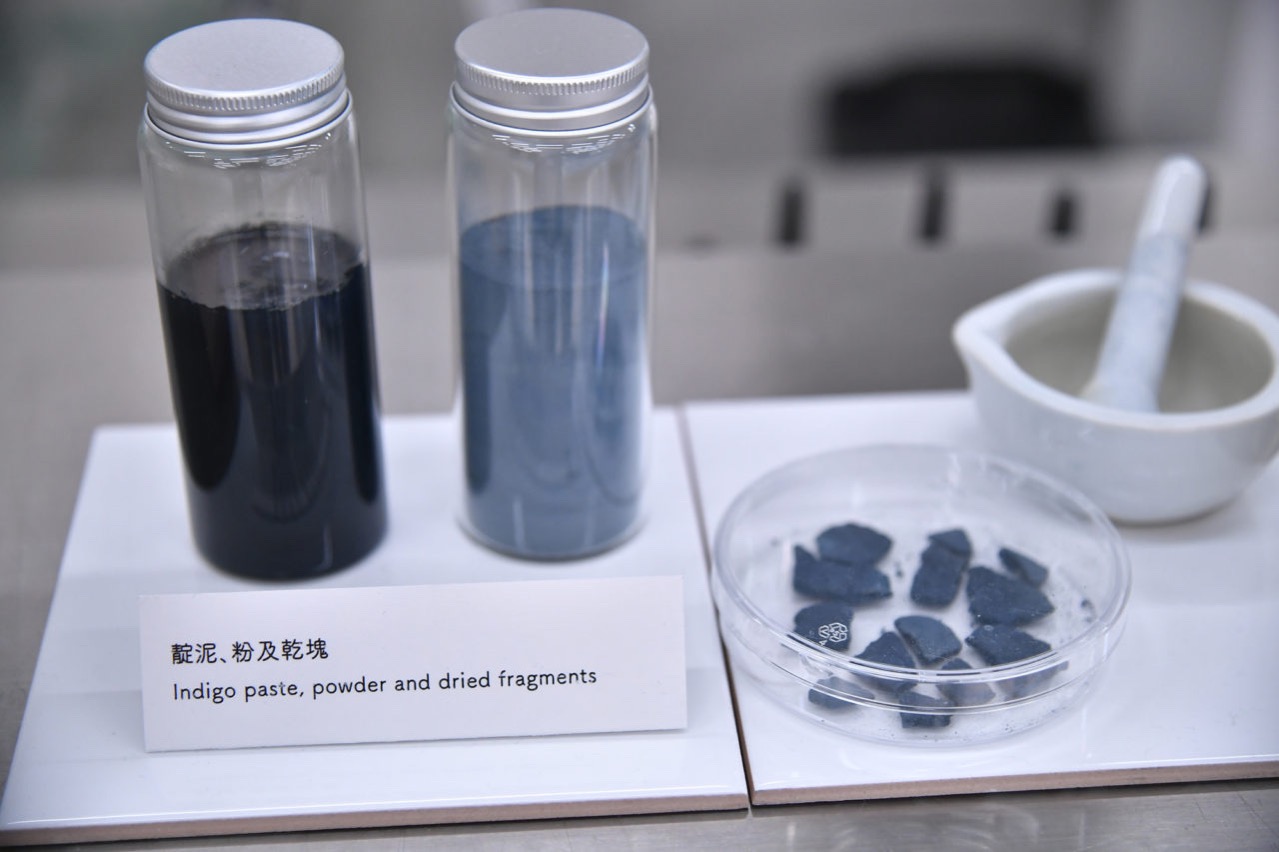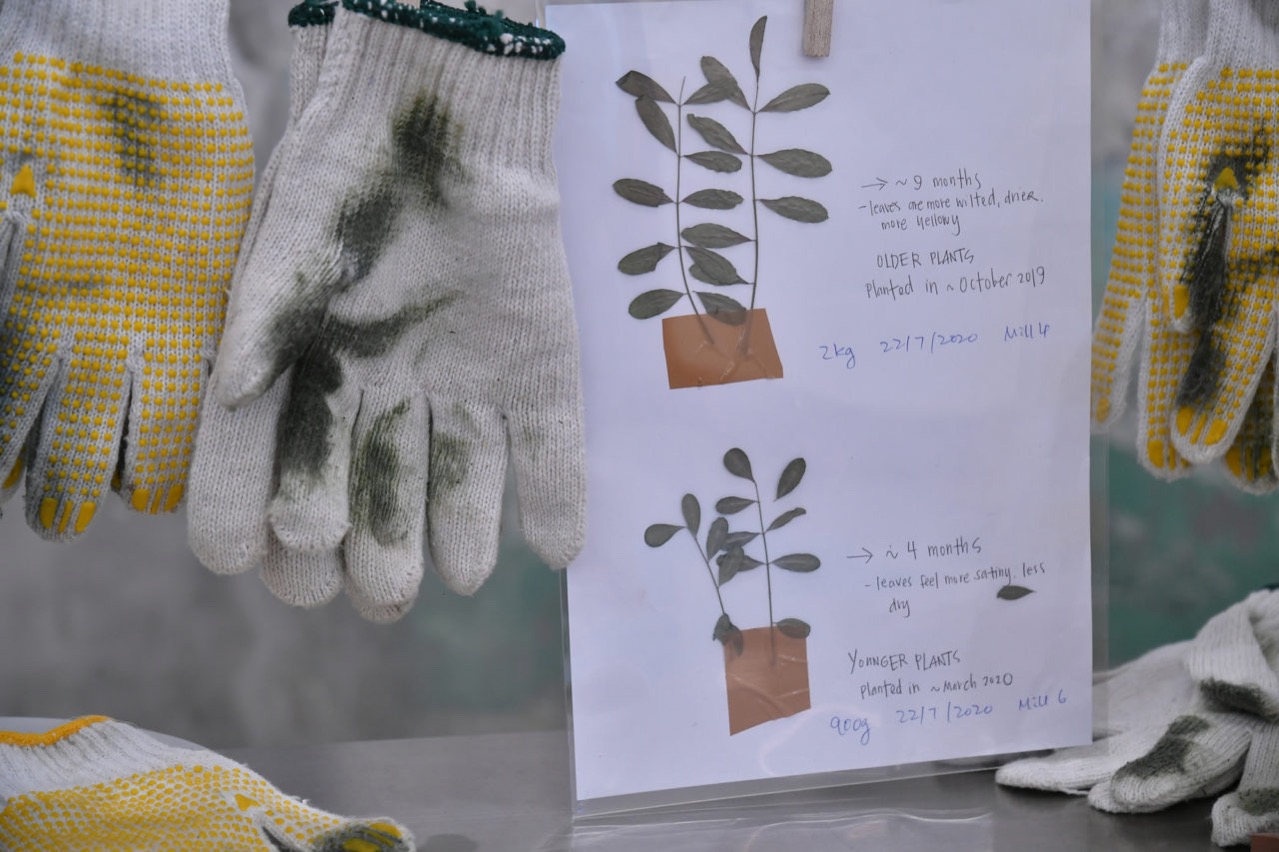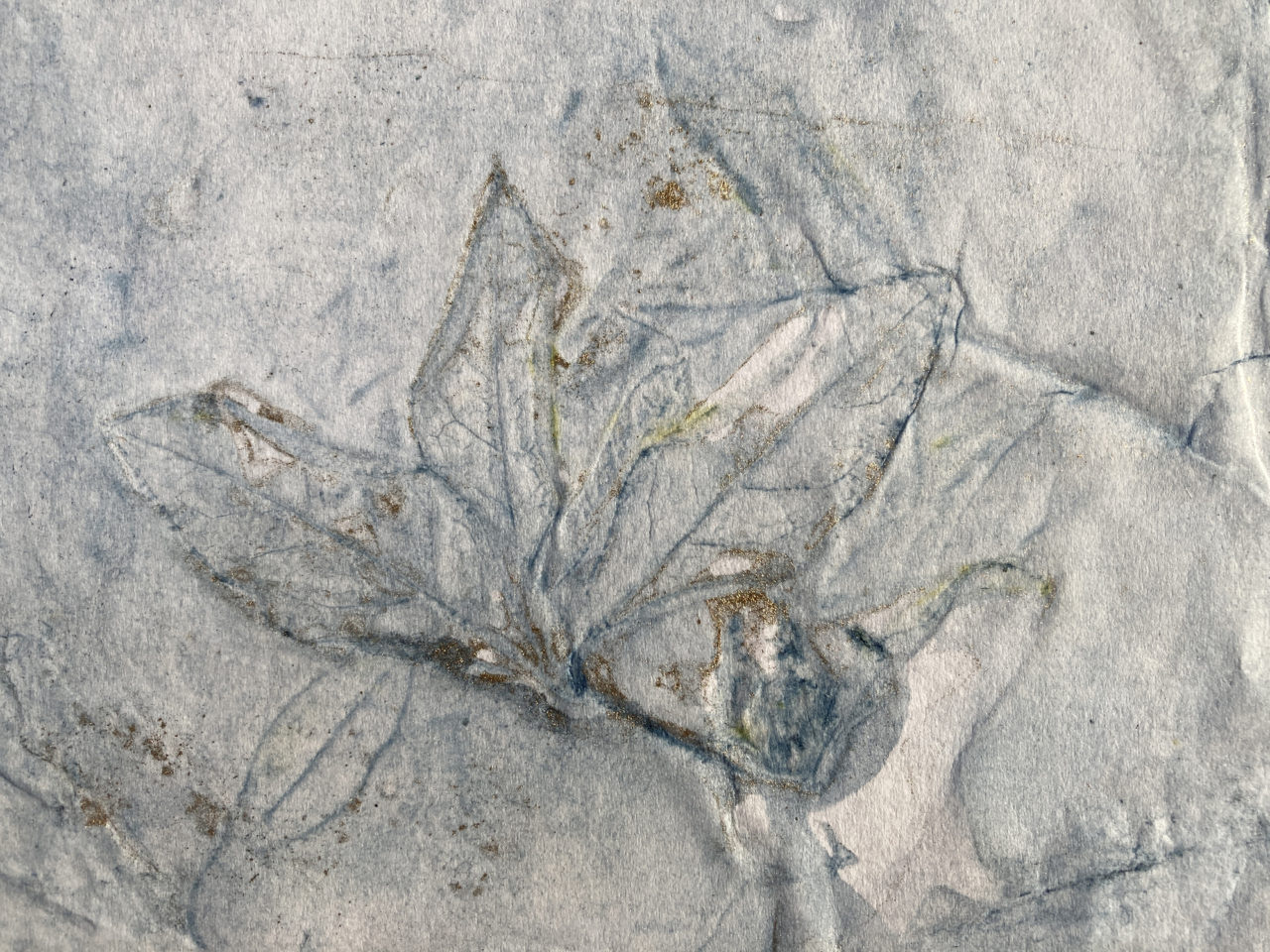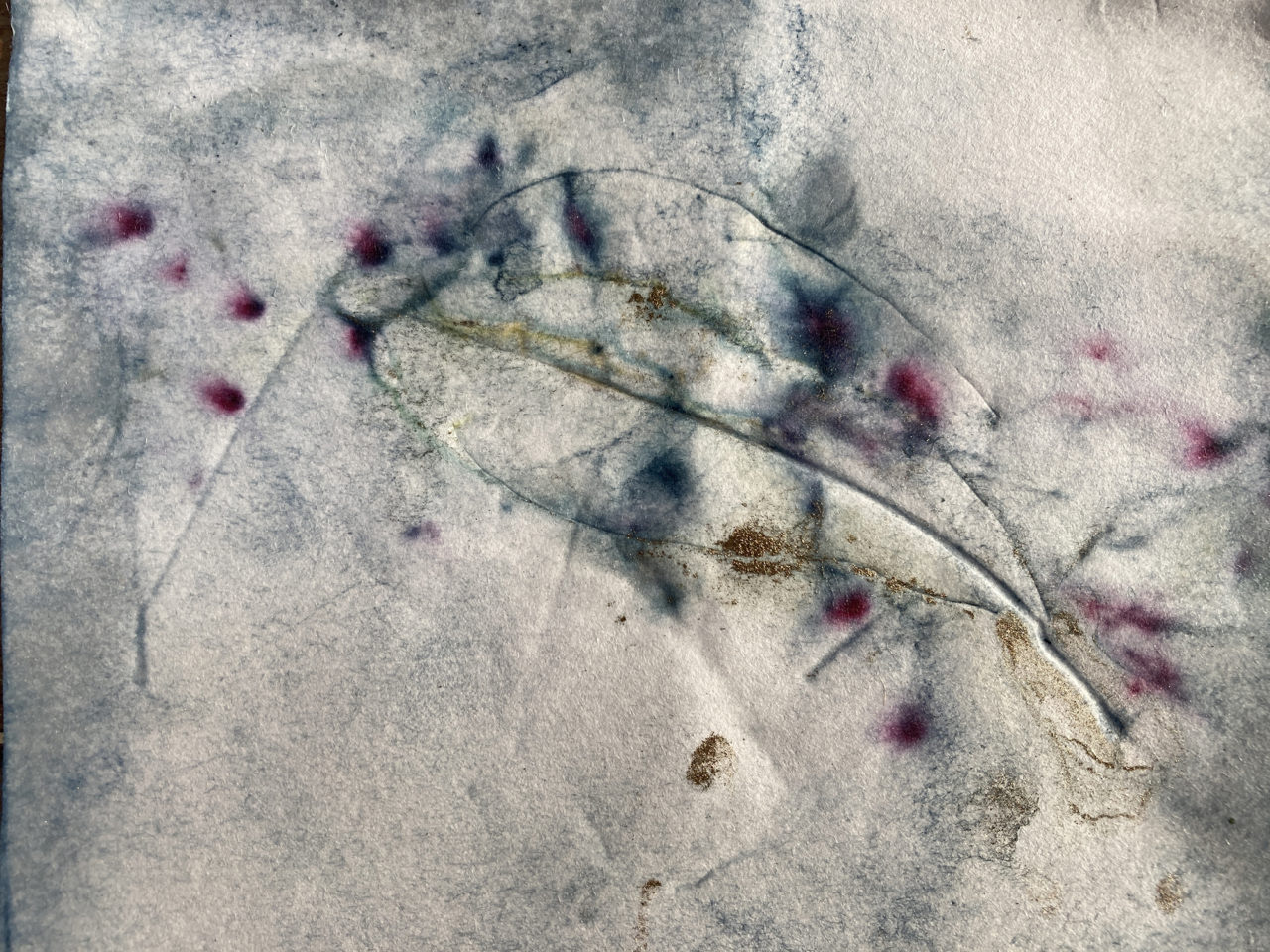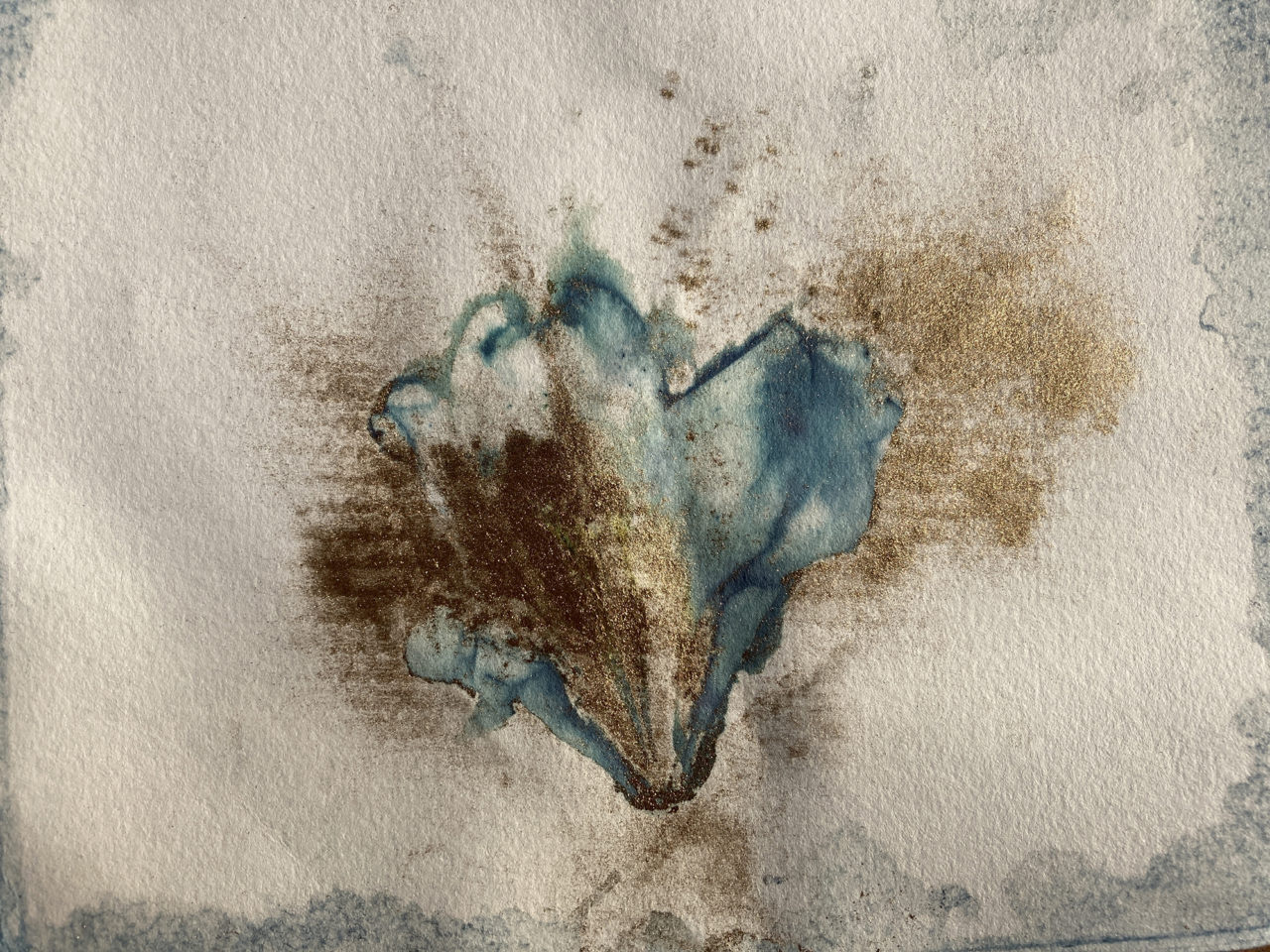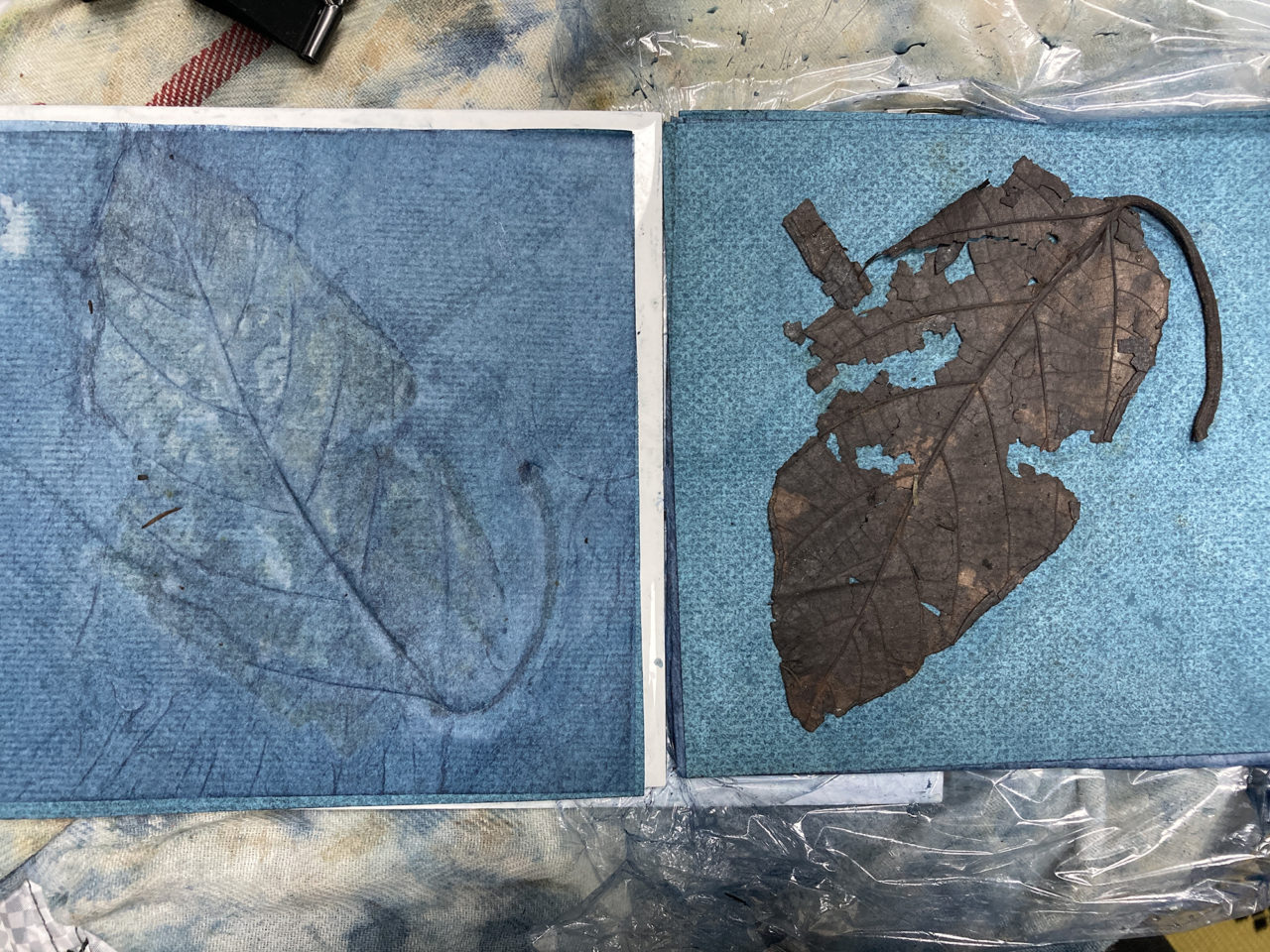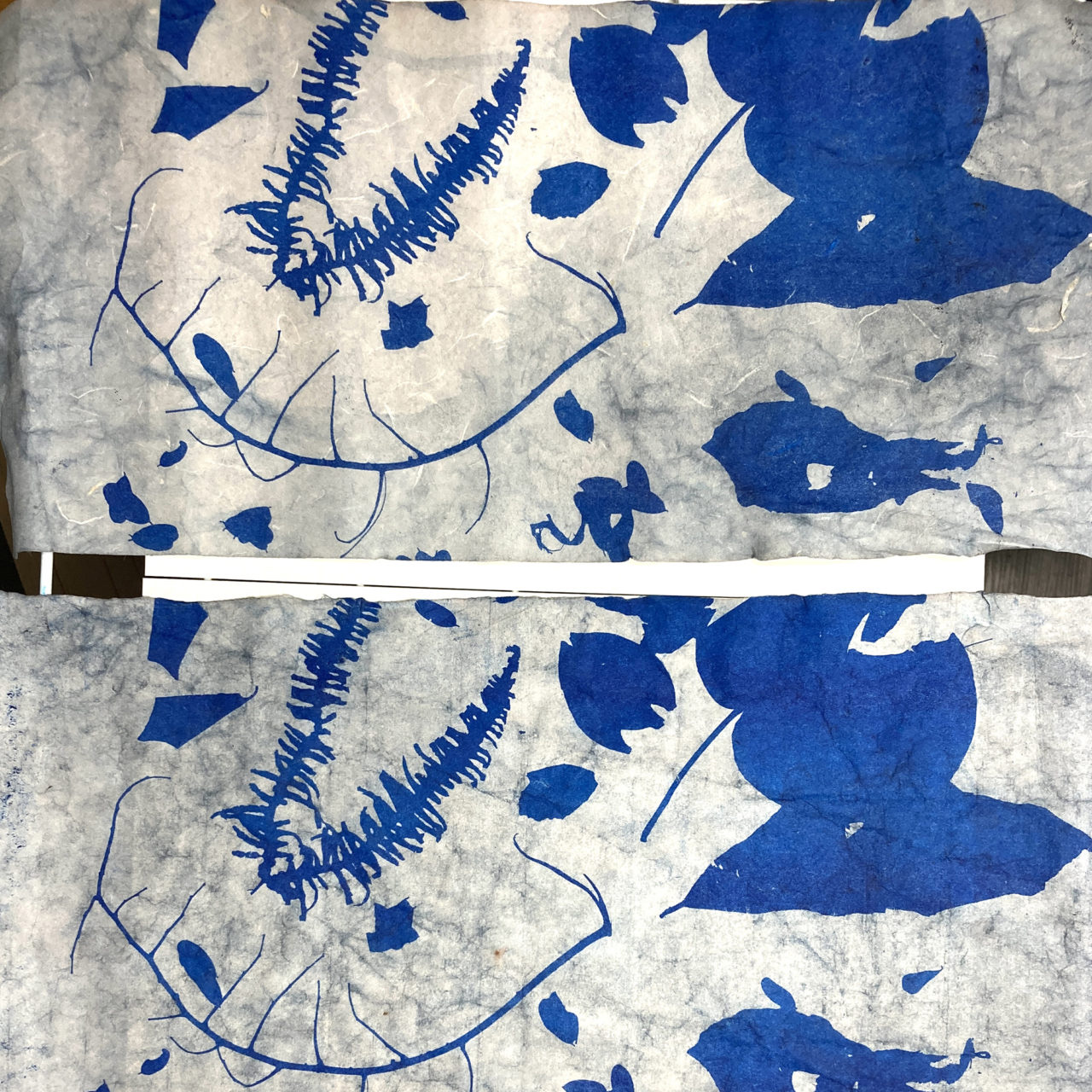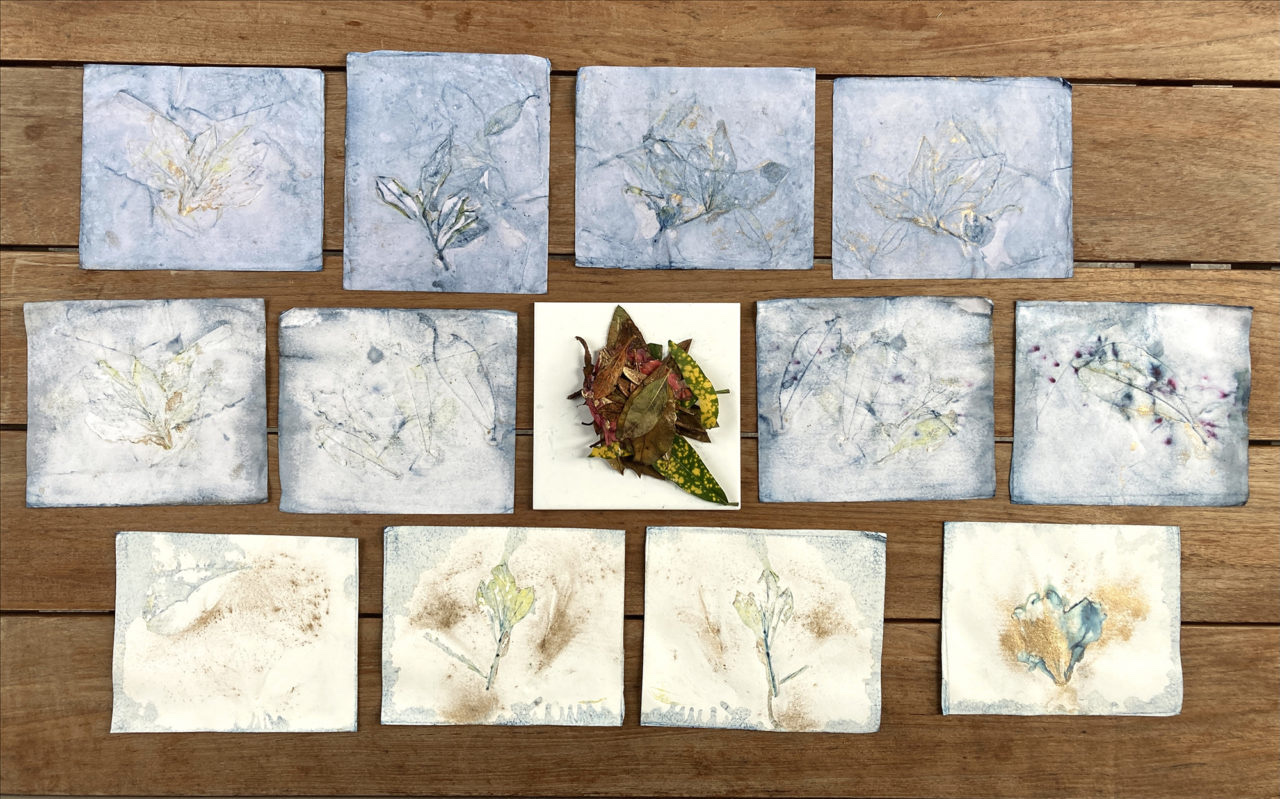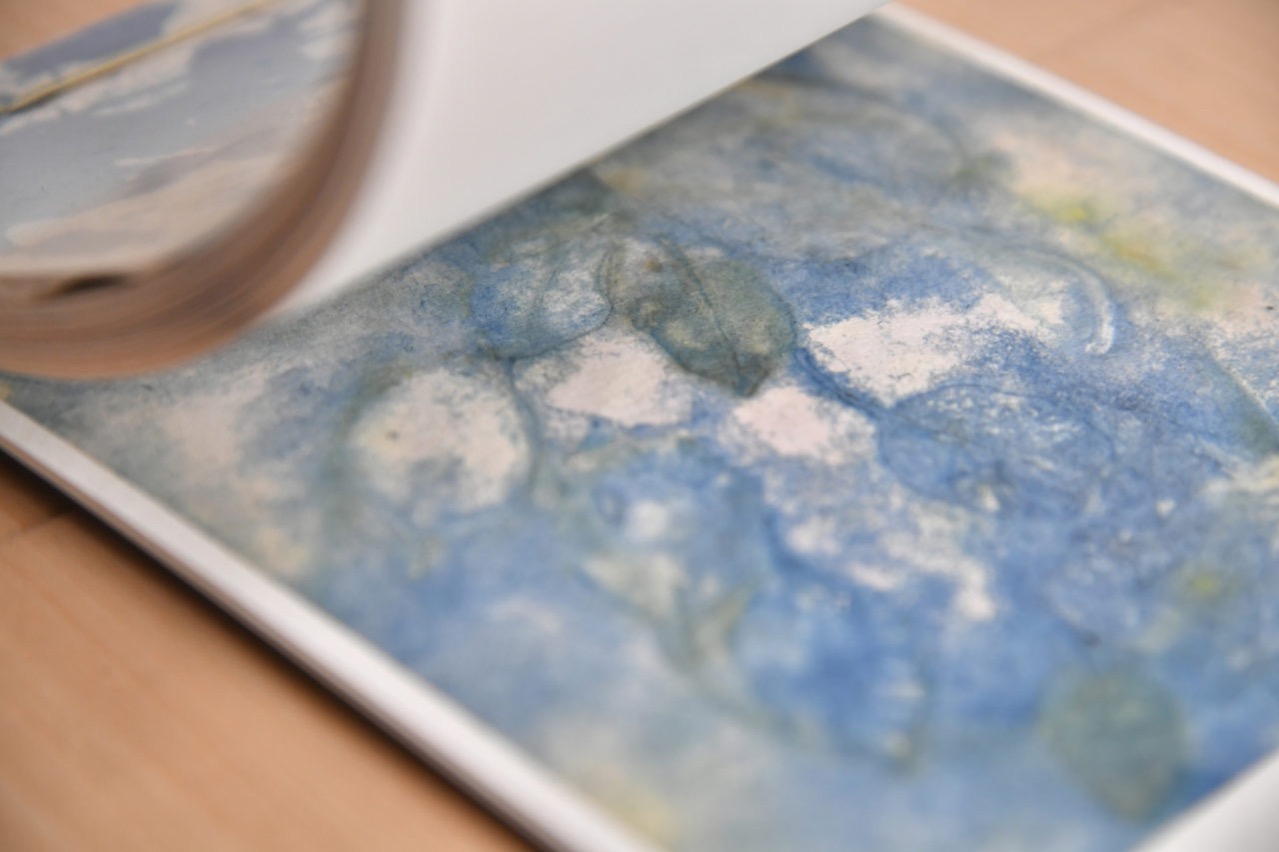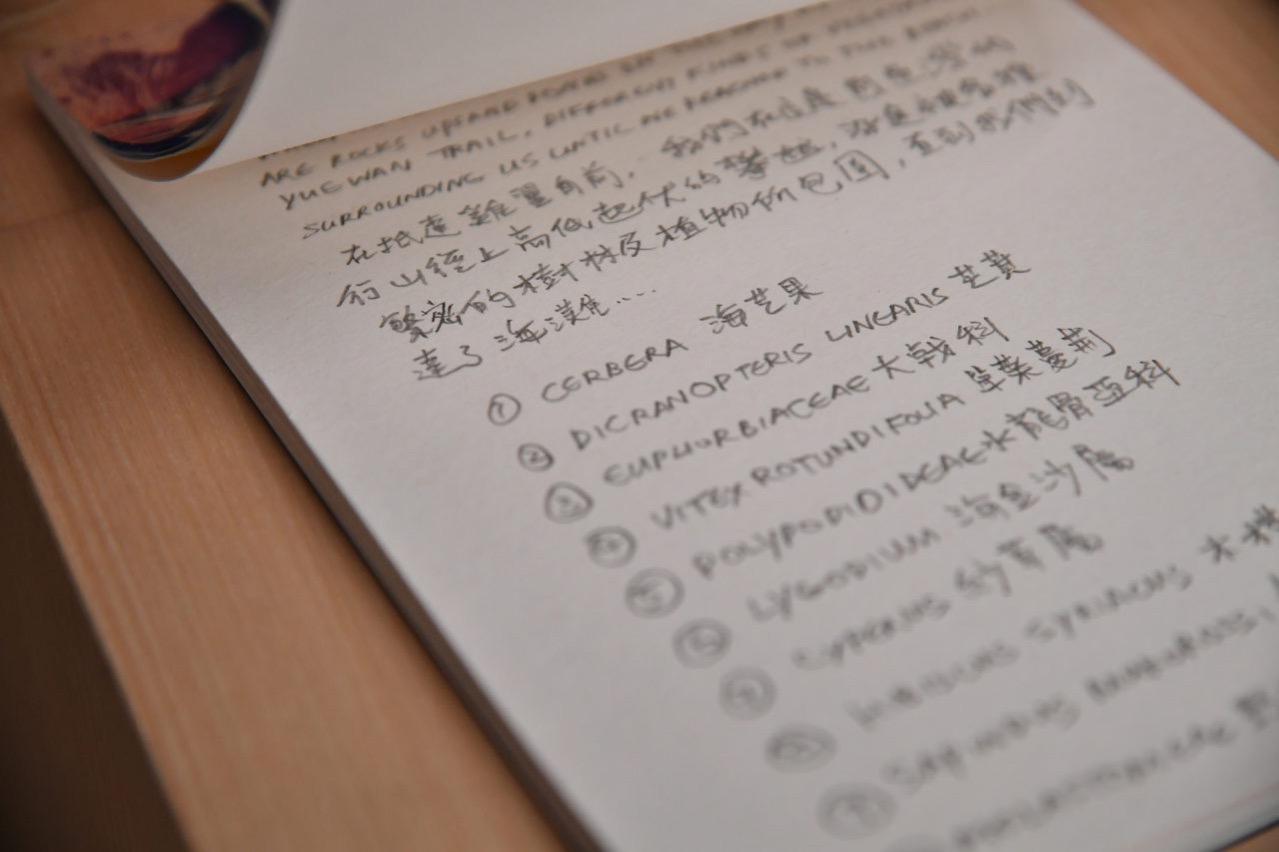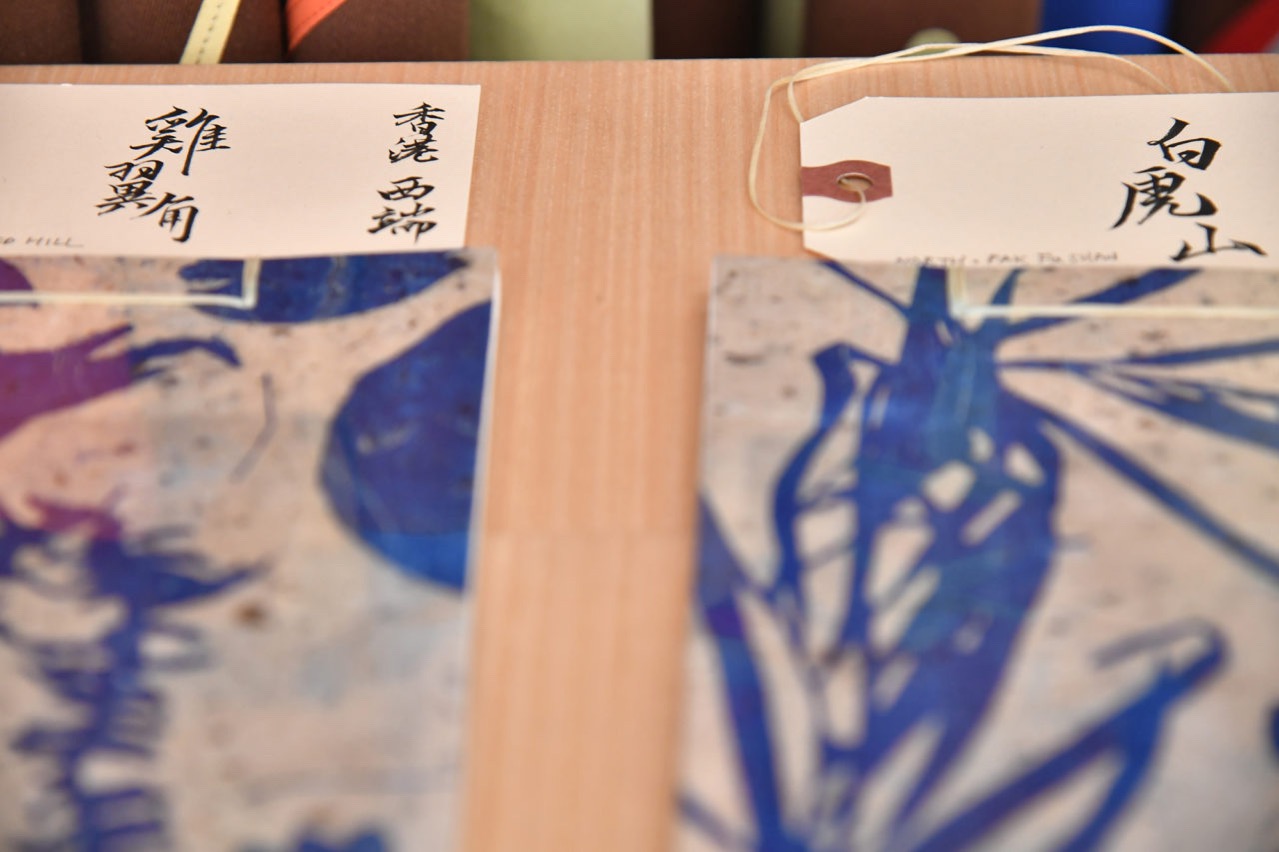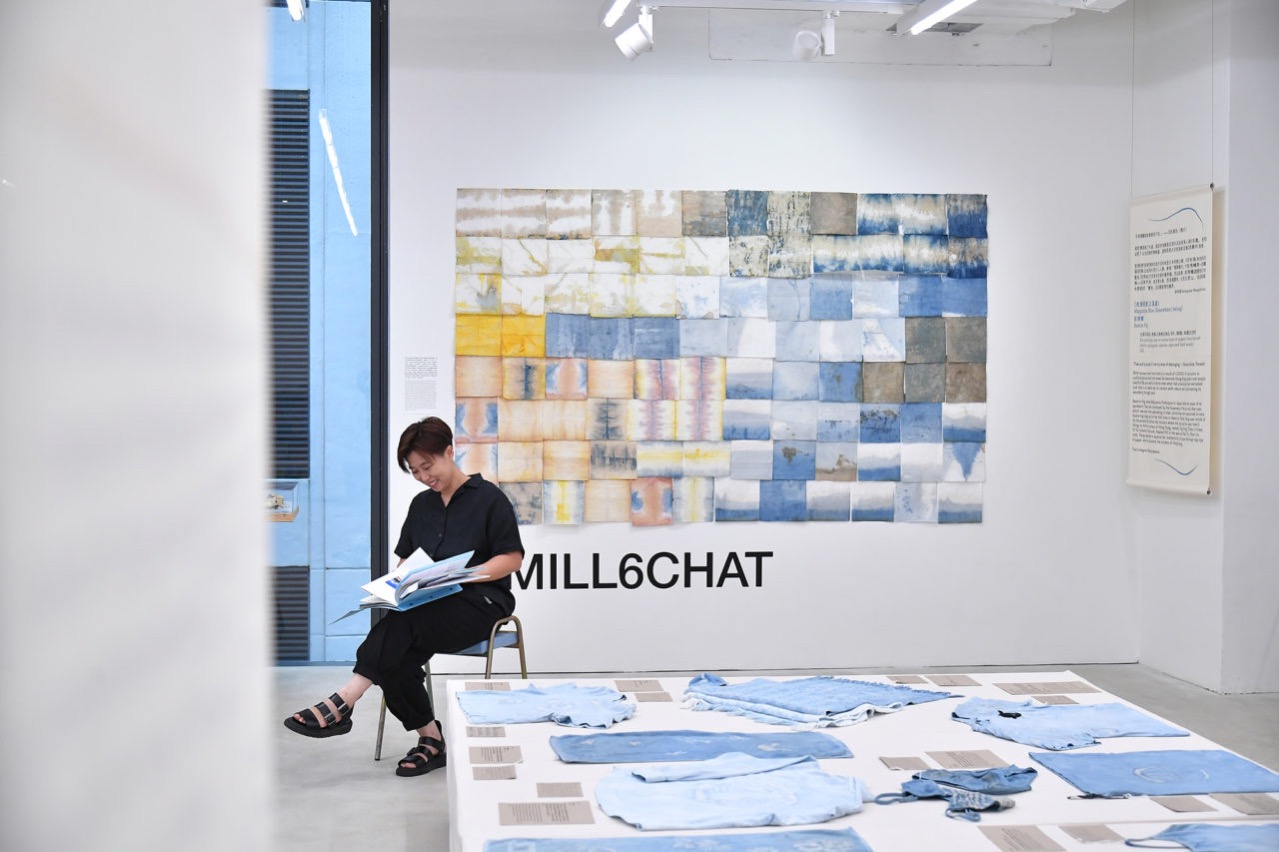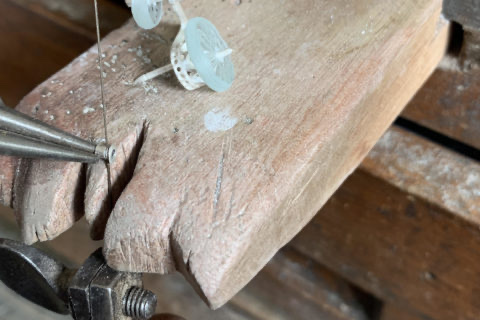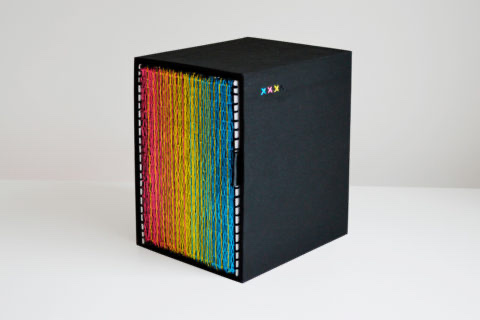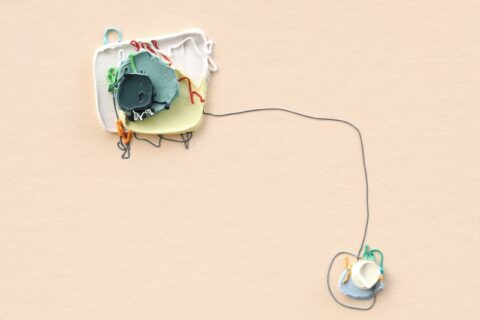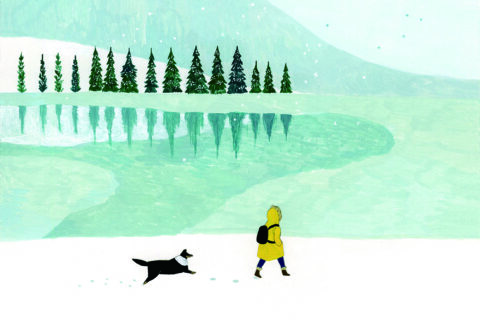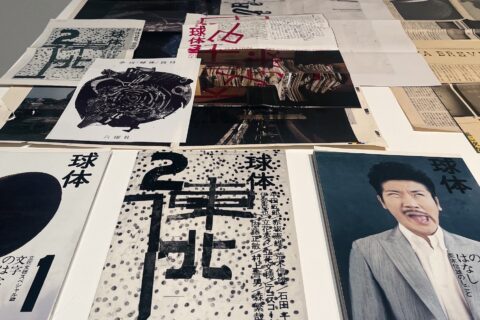邊界是什麼?國家與國家之間、城市與城市之間、家與家之間的邊界是由誰去繪畫出來?如何去尋找這無形、看不見的界線?身處於界線內便等於擁有了歸屬感嗎?抱著這樣的疑問,視覺藝術家彭倩幗(Beatrix)走到香港位於東南西北的『邊界』,以本土種植的木藍來說自身的故事、香港的故事。
2019年南豐紗廠CHAT六廠展開了「種學織文」(Seed to Textile)的活動,邀請了印度藝術家邁索爾向本地農夫和染匠分享藍染的營運生態圈,最重要的是帶來了藍染的種子——木藍,在香港的土地上發芽。香港潮濕溫暖的天氣特別適合種植木藍,一到春夏季便會快速生長。藝術家加藤泉把這上木藍收割加工後,製作成靛泥。隨後,CHAT邀請大眾木起進行實驗,並探索人與大自然的關係。
這次活動的其中一位參與藝術家Beatrix,以出版的經驗投放在這次的創作之中,以宣紙代替布料,為藍染帶來另一道風景。「今次我用了比較個人的方式,以藍染去談藍色、自然和邊界。雖然我嘗試過造紙,卻未曾試過在紙上染色。這次作品所用的紙都是屬於宣紙類,嚴格來說,它不是紙,它是由樹皮造成的。染色時,隨著一上一落的受氧程度來加深顏色,需要不斷測試紙的耐性和限制。」除了木藍,Beatrix也使用了天然的草本染料,豐富地呈現所見到的風景、當刻的感受和腦海裡的印象。「中國古代也會用這些天然植物來染色,如蘇木的紅、薑黃的黃色。我希望以這些天然色調來表達旅程中我們所見的風景,還有內心的情感。」藍色呼應著天空和海洋,像香港最南、被海包圍著的蒲台島;而作品中不同層次的啡色,猶如東邊的東平洲裡隨處可見的沉積岩一樣。「一開始是依腦海裡的印象,選了這些顏色,接下來不斷嘗試、探索。被選出的一幅幅染色畫,拼起來又成為了另一幅畫,透過眼睛流動,它的重疊和並置都會帶來不同的風景。」
關於創作的概念,Beatrix以日本作家沼田真佑的短篇小說〈陶片〉裡出現的一段話:「沒有歸屬感就會感到不安」來訴說在看似平穩的日常生活裡,每人可能都不自覺把自己隱藏在外人不得而知的背後,心裡有個不好說的秘密,帶著不安的飄蕩。在處於不安和歸屬的狀態之間,讓我們執著的或許只剩下内心的自由。 帶著這種想法,Beatrix邀請了三位朋友加入,一起去行山、聊天、創作,各自的故事與到訪的地方交織起來。「年初時,我的公公過世,他已有90多歲,一直陪著我長大,感情很好。雖然不因疫情而離去,但也因疫情而不能到醫院探病,在他去世之前都不能見面,即使是彌留之際,也只能隔著電話叫喊著他,至今想起仍感到難以接受。」Beatrix說,藍色除了是顏色,也可以解作憂鬱、沉澱或是低沉的情緒,在有意或無意間作品也呼應著情緒的狀態。作品裡,除了有染色的創作,也有錄音和文字記錄,記錄了朋友的故事,當中關於對自身、香港的反思,以及生活中的點滴。
「雞翼角是一個讓人深刻的地方,因為路程很艱巨,從大澳出發,然後是二澳,走到沙灘的盡頭,遇上潮退時才有一條沙路連接雞翼角。那天,我們比預計遲了到達二澳,很怕到達沙灘盡頭時遇上潮漲,或是回程時已天黑,加添找路的困難。」Beatrix在每一次行山時也會拾起一些東西,作為行程的記錄。「每個地方都有自己的特色,如蒲台島近南中國海,那些經過的魚船會直接掉棄垃圾在海上。第一次到訪時,十分驚訝沙灘上全都堆滿了垃圾。這些物品見證著環境如何地受到人為的因素影響。」像南瓜形狀的海膽殼、破爛了的玩具、枯枝和落葉⋯⋯組成了每一個地方,是獨一無二的存在。
Beatrix在大學畢業後,做了幾年攝影師,雖然攝影沒有成為她長久的職業,但攝影卻以不同形式持續地在他的創作中出現。「在這次創作裡,我透過植物壓染的技術把拾來的植物記錄下來。植物壓染多用於布料上,使用醋酸、加熱、重疊和加壓,使植物的顏色印在布料上。我換上紙張、以藍染方式呈現植物的形狀,木藍染料停了在邊緣上,更清楚地呈現樹葉的紋理,如素描時勾劃線條一樣。這種介乎相片與畫之間的影像,猶如即影即有般,每次出來的效果都不一樣。」淡淡的木藍味道,在空氣中飄散。透過藍染留住了時間,還有觸感,停留在接觸過的事物上。
「我比較關注人工和自然的關係,上一次的創作是關於動植物公園的,我畫下了那裡居住的動物,呈現牠們的狀態和居住的籠的結構,然後再看人在其中如何介入,反思這個空間的意義是什麼。城市的空間裡,人工的設計在某程度上影響生物的存在,這是我想繼續去探討的議題。」
關於「種學織文」,主理人Wendy提及這創作最基本的概念是探討人與土地的關係。這一章節是關於藍染,下一章節是什麼還未知道,但總是離不開如何連繫社區、思考人和地怎樣連結在一起。透過這項目,讓大眾知道靛泥是能夠在香港提煉出來的,同時使我們思考自己怎樣參與或連結香港的土地、社區或是我們認為很重要的一事一物。
How do we define boundaries? Who draws the boundaries between countries, cities, and dwellings? How do we find these invisible dividing lines? Does being within the boundaries create a sense of belonging? With these questions in mind, Beatrix Pang, a visual artist, embarked on a journey to visit the vast boundaries of Hong Kong. Using the locally grown true indigo (indigofera tinctoria) as a medium, she recorded stories of herself, as well as those of Hong Kong.
In 2019, the Centre for Heritage, Arts and Textile (CHAT) of The Mills unveiled the community project, Seed to Textile, in which collaborators from Mysore, India were invited to visit Hong Kong to introduce their operation ecosystem to local farmers and dyers; and what’s more, they brought along with them the seeds of true indigo that were subsequently sown on the soil of Hong Kong. The indigo plants must love the humid and warm weather in Hong Kong for they grow so healthily and rapidly during Spring and Summer, which allows the artist Kato Izumi to harvest the leaves and turn them into indigo pigment. Over the years, CHAT has been recruiting inquisitive people to join the project and experiment together to explore the relationship between humans and nature.
As one of the collaborators of this artistic exploration and also an experienced publisher, Beatrix makes use of her skills and experiments with the various possibilities of indigo dyeing; yet instead of dyeing on cloth, they opts for xuan paper. “I consider this project a more personal way for me to approach the subjects of blue, nature, and boundaries. I have experience in making paper, but have never tried dyeing it. I used xuan paper for this project. But strictly speaking, it is not paper as it is made of tree bark. Oxidation matters a lot during the dyeing process. It takes a lot of experimenting and patience to achieve the desired color and shade.” In addition to true indigo, Beatrix also made use of other natural dyes derived from plants to enrich her work. “Natural dyes were used in ancient China. The red from sappanwood (biancaea sappan) and the yellow from turmeric (curcuma longa). I want to use these natural tones to express what I see and how I feel.” Blue reminds us of the sky, ocean, and the Po Toi Islands, which are hidden away in the southernmost part of Hong Kong. The different shades of brown are like the sedimentary rocks that can be seen everywhere in Tung Ping Chau. “I chose these colors based on my impression, and they evolved over time as I further explored and experimented. Each dyed work is unique. When placing them alongside each other, the overlapping and juxtaposition creates new meanings.”
Talking about the concept behind her work, Beatrix quoted from Pottery, a short story by the Japanese writer Shinsuke Numata, which says, “You feel anxious without a sense of belonging.” You might think others are living a peaceful life, but what you don’t know is that they might be putting on a poker face, hiding their feelings and emotions, keeping everything to themselves, and living an uneasy existence. Facing a lack of sense of belonging, finding inner peace might be the only way to calm the anxious soul. Beatrix finds peace spending time with friends hiking, chatting, and creating. Their stories are intertwined with the places they visited. “At the beginning of the year, my grandfather passed away. He was over 90 years old. He had always been there and I was very close with him. Although it wasn’t the pandemic that killed him, the virus kept me from visiting him at the hospital. When it was time to say goodbye, I couldn’t even see him in person. I could only call his name over the phone. I still feel very sad when I think of it.” Beatrix said that blue is not merely a color. It represents sadness and contemplation. Whether intentional or not, the various shades of blue Beatrix created reflects her emotional state. Besides dyed works, Beatrix also produced audio and written records for the project. These records, which include personal reflections on self and Hong Kong, as well as the bits and pieces in life, are all stories of friends.
“Peaked Hill is a remarkable place. It’s very difficult to get there. The journey starts from Tai O, and then to Yi O. When you finally arrive at the end of the beach, and also when the tide is low, a tombolo will be exposed to the sea level, connecting Peaked Hill to the beach. That day, we arrived at Yi O a bit later than expected. We were afraid that the tide would rise by the time we reached the end of the beach. We were also worried that it would be hard to find our way back when it got dark.” Beatrix picks something up every time she goes hiking. They keep them as a record of the trip. “Each place has its own unique characteristics. For example, Po Toi Islands are close to the South China Sea. People on the fishing boats that pass by the area sometimes dump their trash in the sea. When I first visited Po Toi Islands, I was surprised that the beaches were covered with garbage. These trashed items present to the world how we humans are affecting the environment.” The sea urchin shell that has a shape of a pumpkin, broken toys, dead branches, and fallen leaves… together they give meaning to a place. Their existence is unique and special.
Upon graduating from university, Beatrix worked as a photographer for several years. Although photography doesn’t work as a long-term career, its influences can be seen often in creations. “For this project, I eco-printed the plants I collected. Eco-printing is a dyeing method that is mostly used on fabric and requires the use of acetic acid. With steaming, stacking, and pressing, the dye found naturally inside the plant is released, leaving a contact print on the fabric. Instead of fabric, I used paper. Indigo dye was also used in the process to better reveal the actual shapes and marks of the plants. The result is similar to that of a line sketch. It’s like a painting, but at the same time, like a photograph. Every print is different. Just like taking a Polaroid.” The faint smell of true indigo fills the air. The essence of time and the sense of touch are captured in the shades of indigo.
“I am more concerned about the relationship between man-made things and nature. My last creation is about the zoological and botanical garden. I drew the animals that live there, trying to reflect their well being and the structure of the cage in which they live, and then I looked at how humans intervene in all of these. In urban space, man-made creations are somehow affecting the existence of living things. This is an issue that I want to further explore.”
The mastermind of Seed to Textile, Wendy once said that the ultimate goal of the project is to explore the relationship between humans and land. While the current chapter of the project focuses on indigo dyeing, what’s next is yet to be decided. With that said, the project will always center on the relationship between man and land and community connection. Seed to Textile not only successfully explored the possibility of harvesting Hong Kong’s locally grown indigo and creating pigment out of it, it also gave us a chance to reflect on how we can connect with Hong Kong’s soil, communities, and the things that we treasure.
